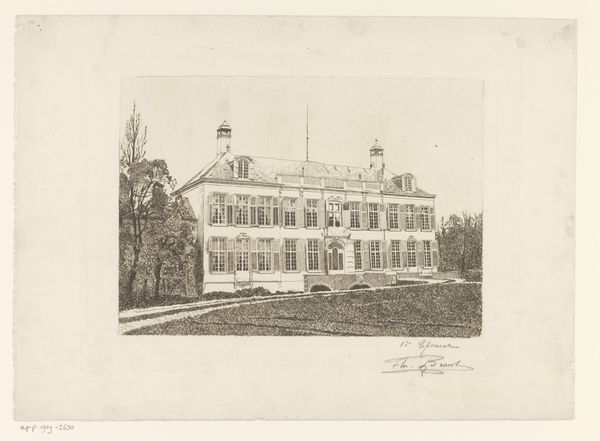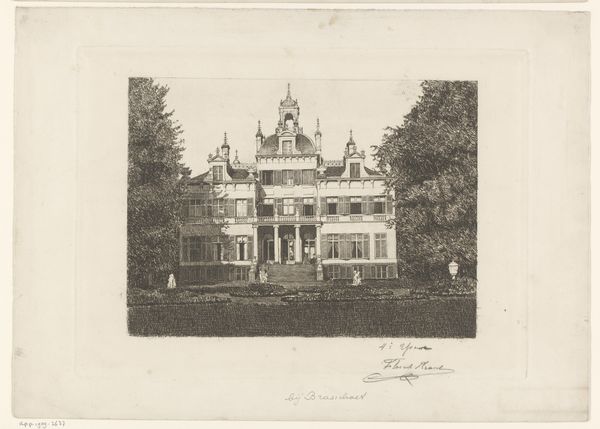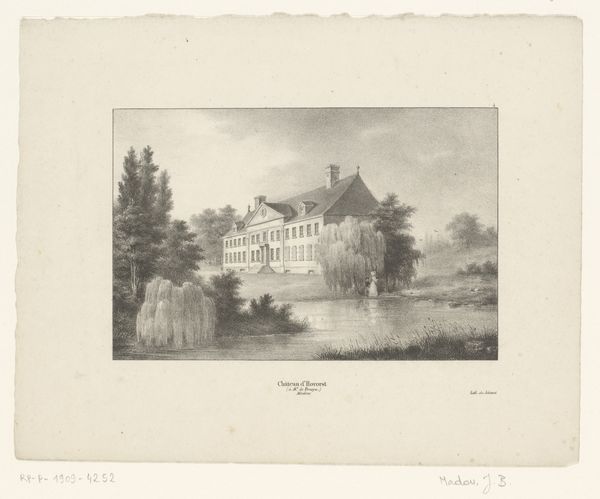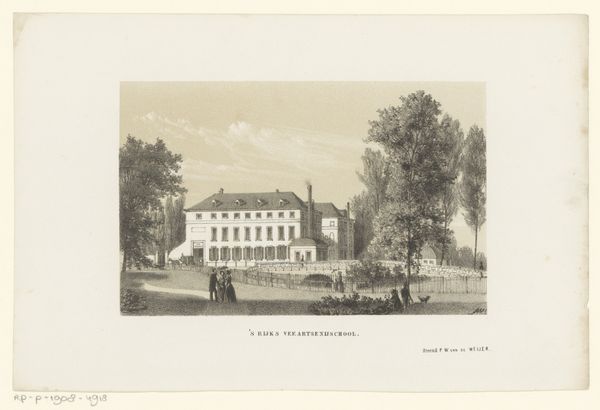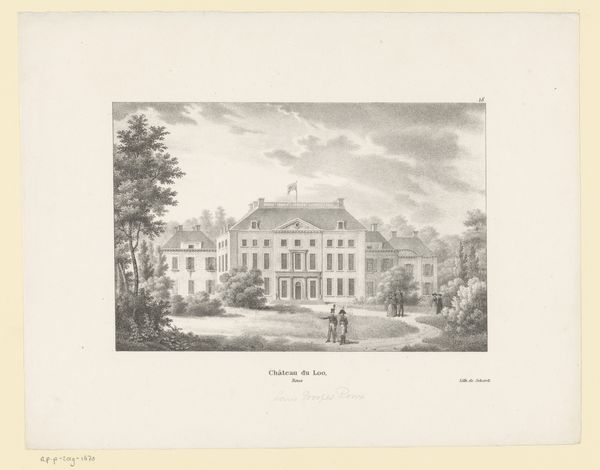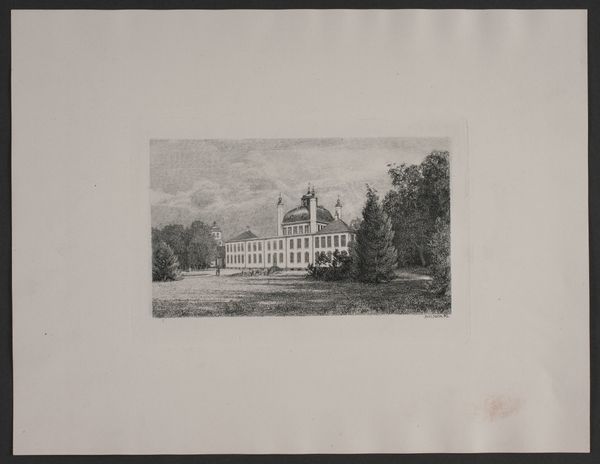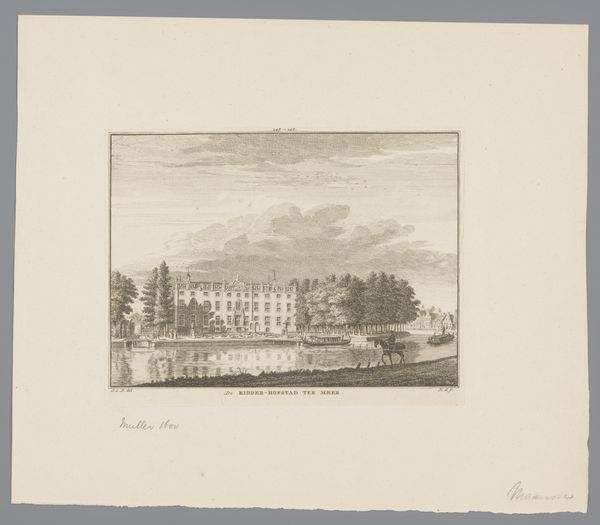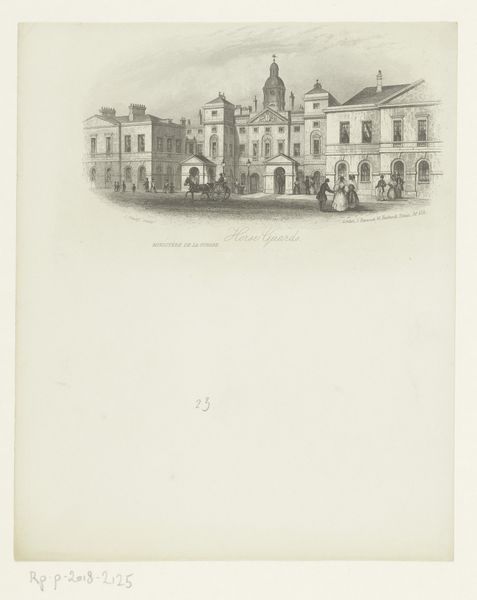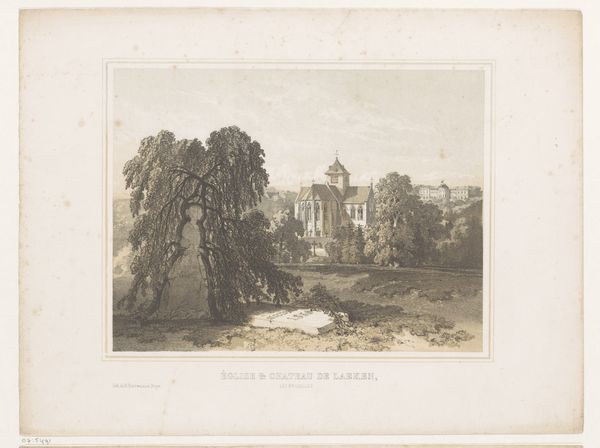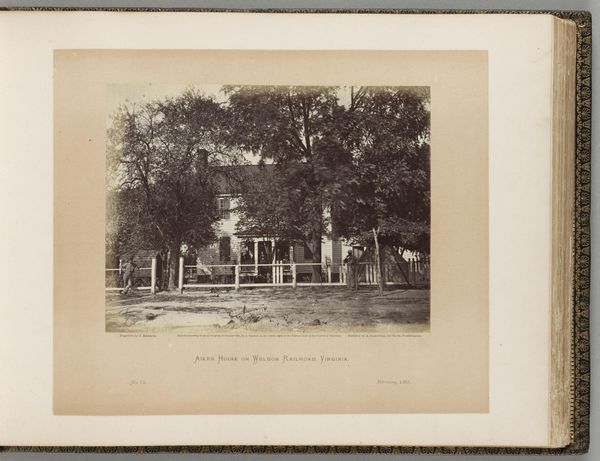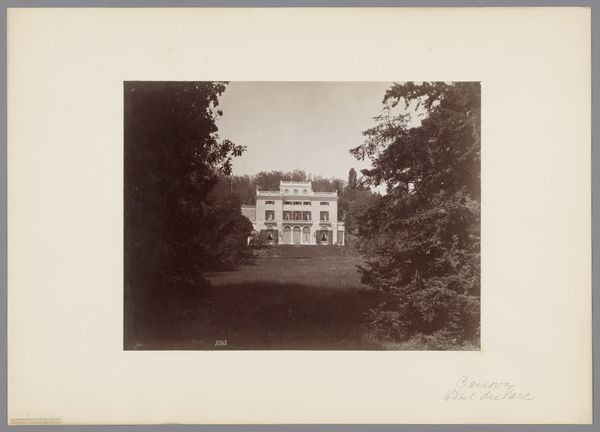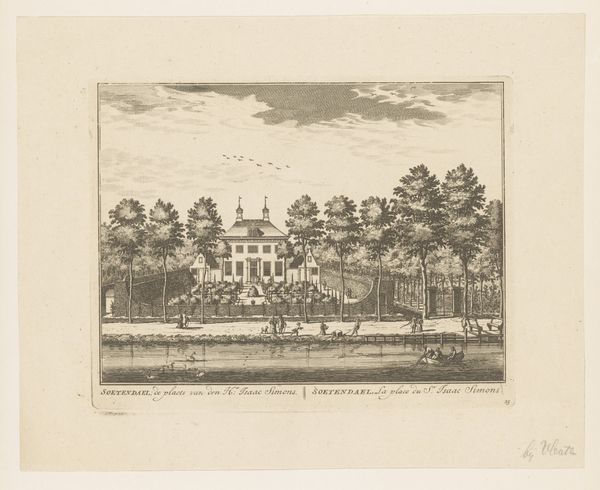
Dimensions: height 141 mm, width 191 mm
Copyright: Rijks Museum: Open Domain
Curator: Here we have "Landgoed Waterland," created in 1914 by jonkheer Barthold Willem Floris van Riemsdijk, currently residing here at the Rijksmuseum. It's rendered in etching, giving it that unique texture. Editor: It's so delicate, almost ghostly. The architecture looms there in the middle distance, flanked by these brooding, dark trees. It feels like a scene from a dream. Curator: Landscape paintings during that period were really symbolic, often evoking specific historical associations. Consider, if you will, the architectural style, the balance between nature and construction, how these might function to symbolize class structure. Editor: True, but I find my eye drawn more to the etching itself. Notice how the lines are meticulously cross-hatched to create shadow and volume, and how much labor has gone into the tooling and printing the plate. The etching seems to point to a world increasingly fascinated by processes of mechanical production. Curator: Very insightful. And what meanings emerge? We can discuss this work in context of others by this artist—a scion of Dutch aristocracy and a skilled renderer of architecture within verdant Dutch landscapes. Consider what he might have been striving to create for the public image. Is there something that evokes an archaic notion of ownership and feudal relationships? Editor: Or consider the materiality. The artist took these hard, rigid metal plates and translated that to the image. Think how radical it was for the wealthy to even participate in print culture. What sort of work went into this? The cultural implication goes both ways. Curator: Absolutely. It bridges a unique transition where the image retains deep symbolism. In the twilight before a world war, aristocratic privilege appears to loom just out of reach like this scene. The symbolism still resonates for contemporary audiences who understand wealth distribution and social inequality. Editor: I agree completely. When looking closely, we see so much labor, technical skill and a historical milieu embedded in the ink. It shows just how entangled these objects become as commodities. Curator: Yes, and it challenges us to interpret beyond a purely aesthetic appreciation of the scenery depicted. Editor: Exactly. Considering labor, material, and symbol together helps this artwork spring to life, with deeper emotional power.
Comments
No comments
Be the first to comment and join the conversation on the ultimate creative platform.
